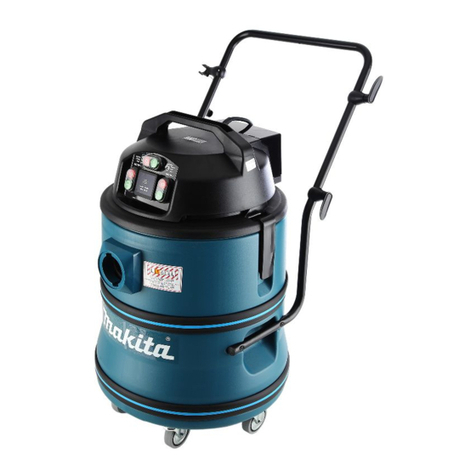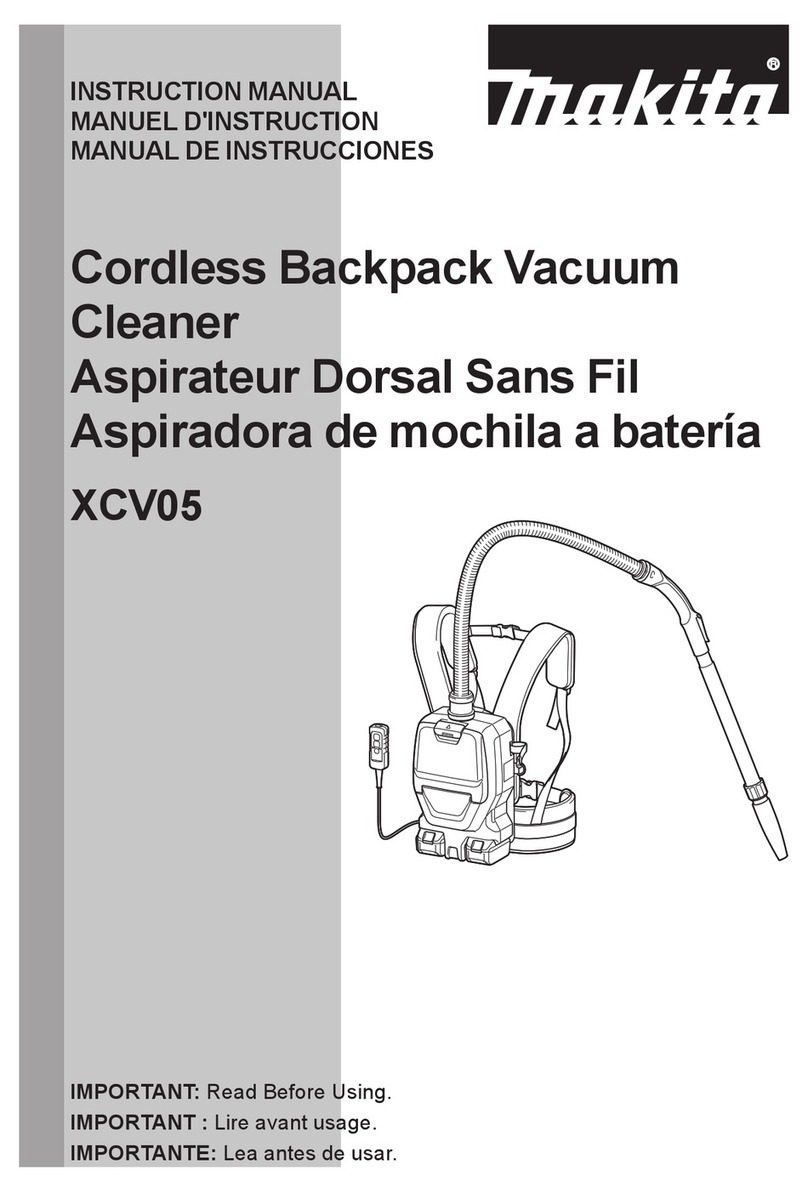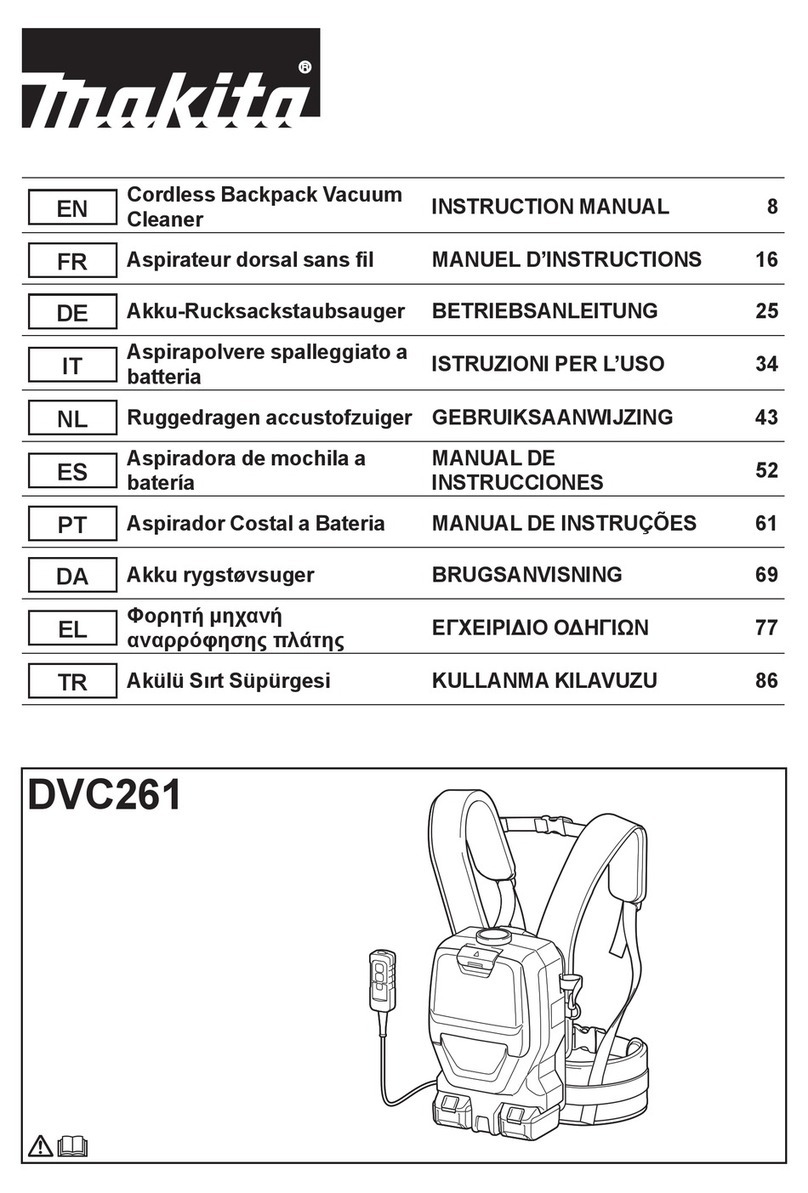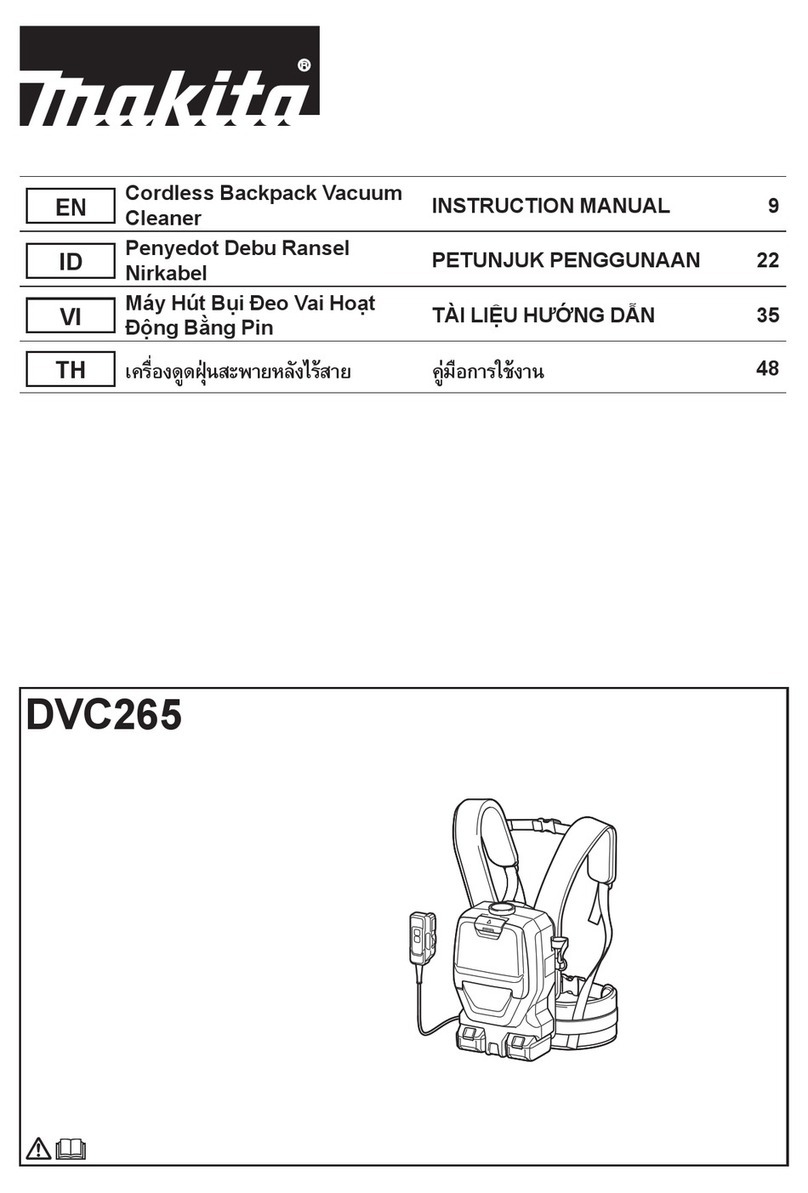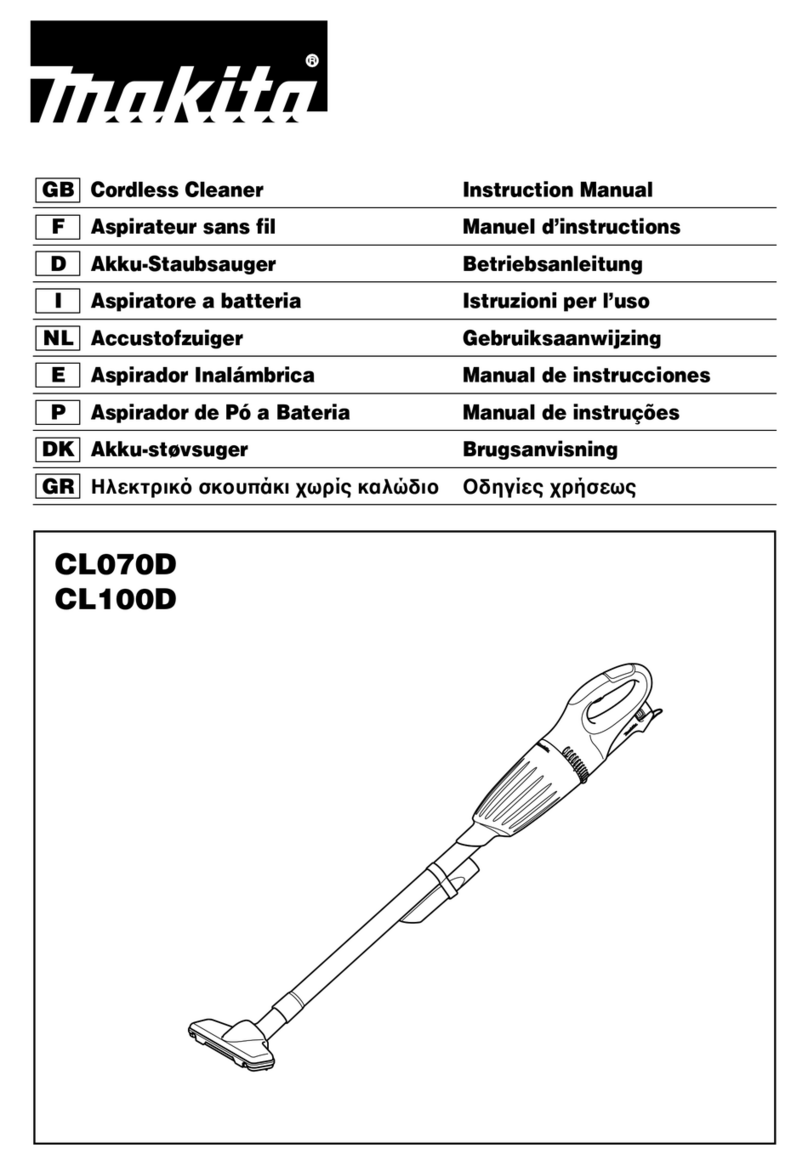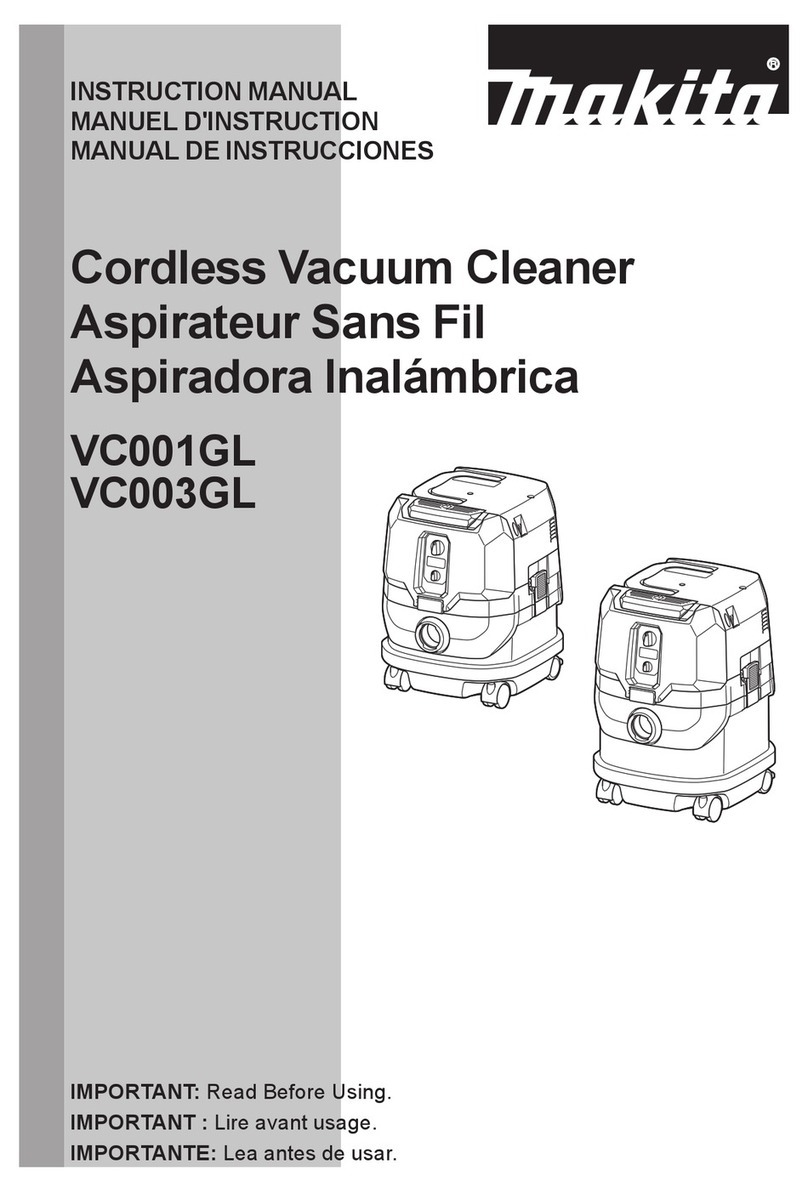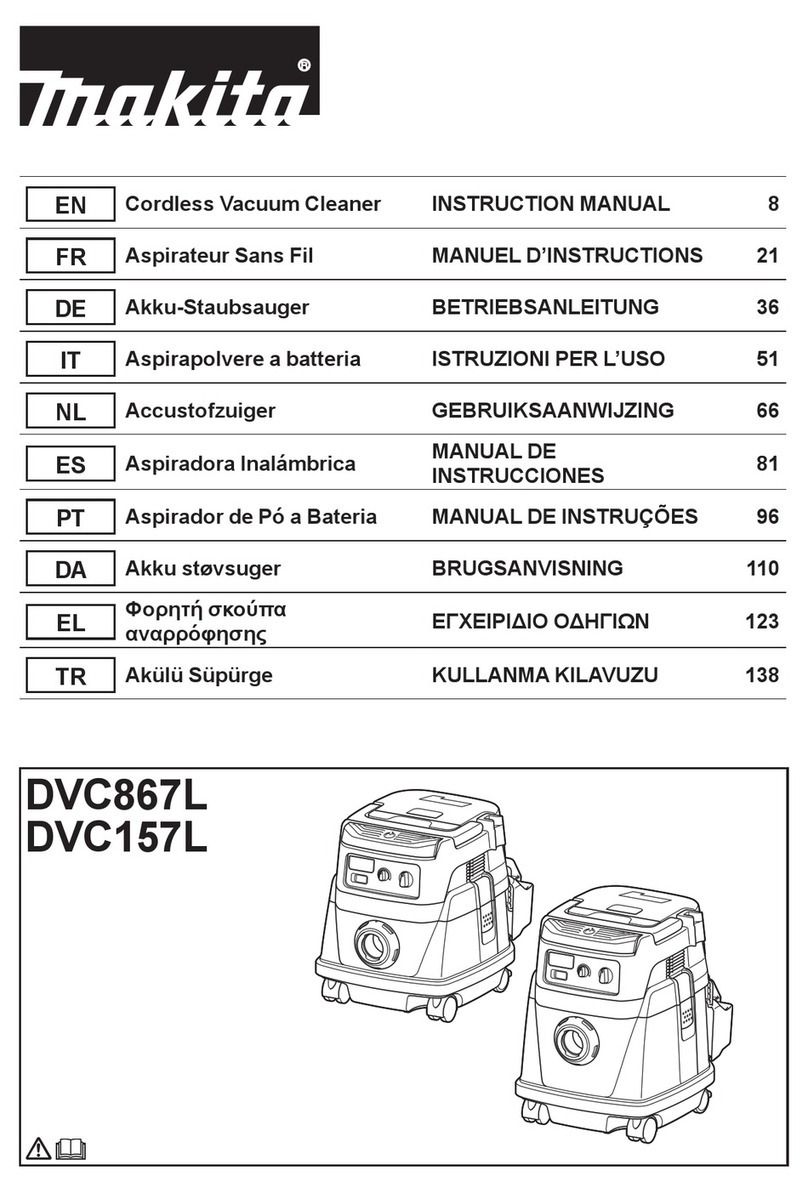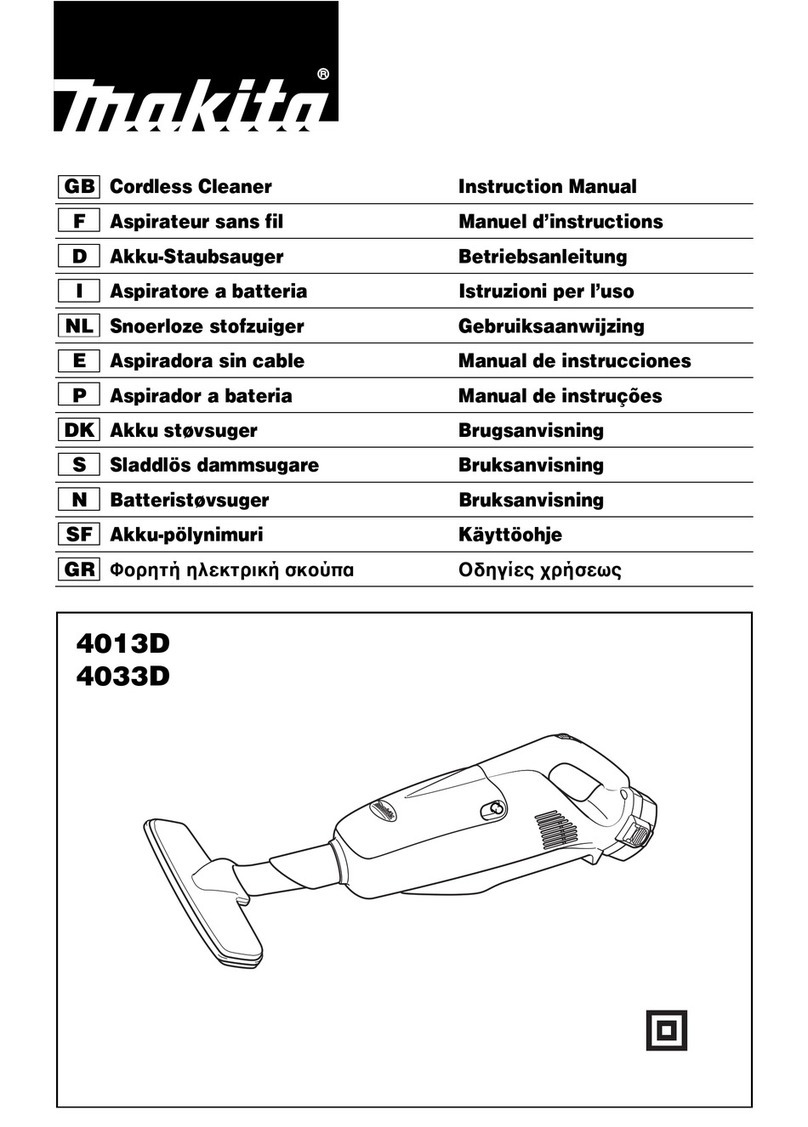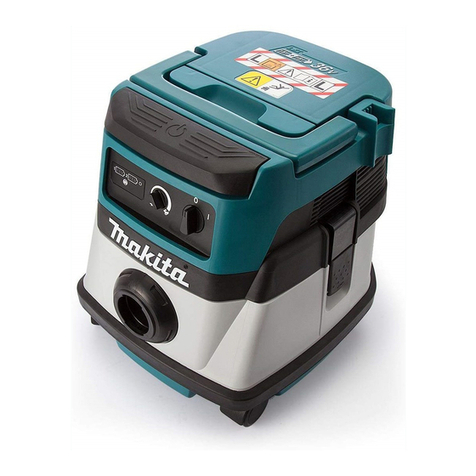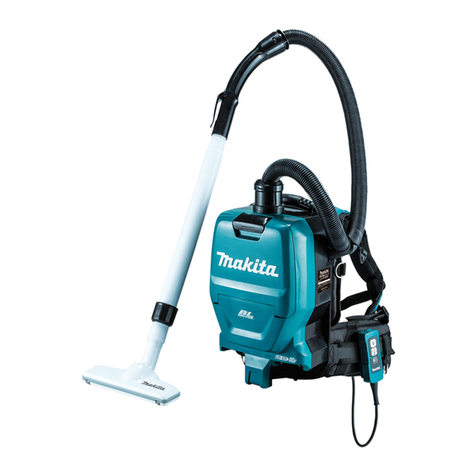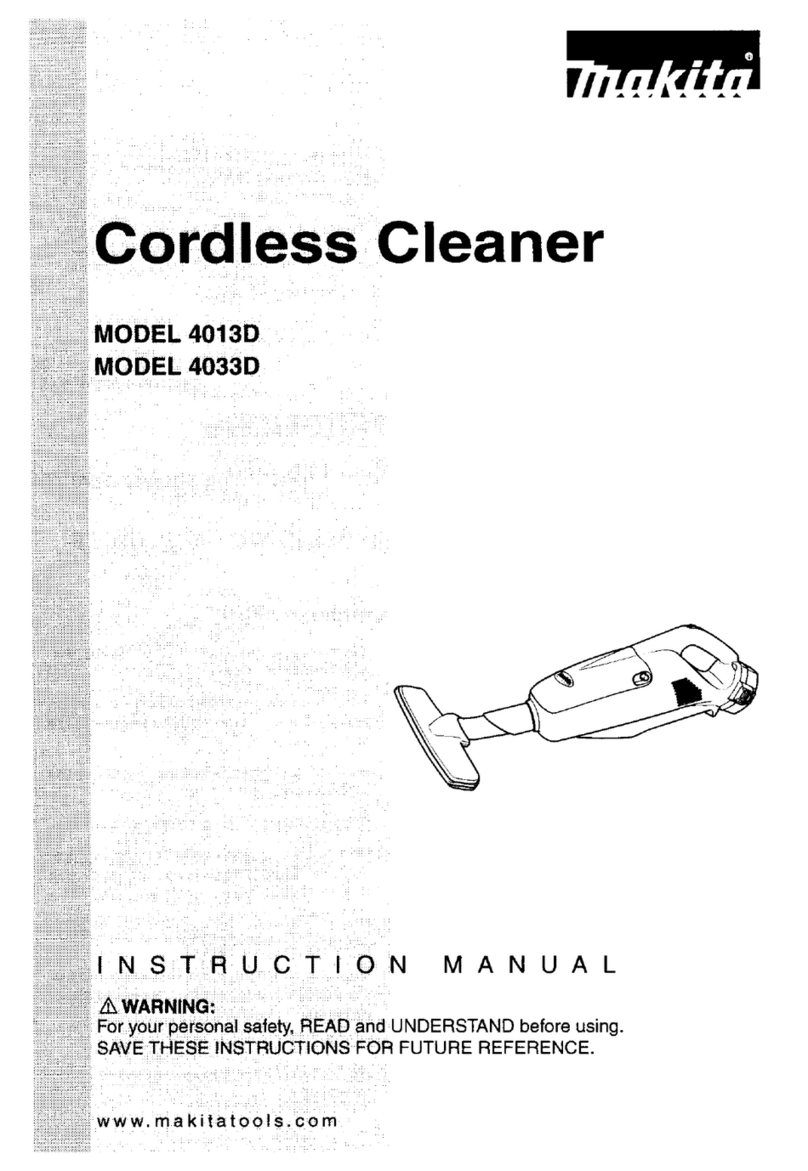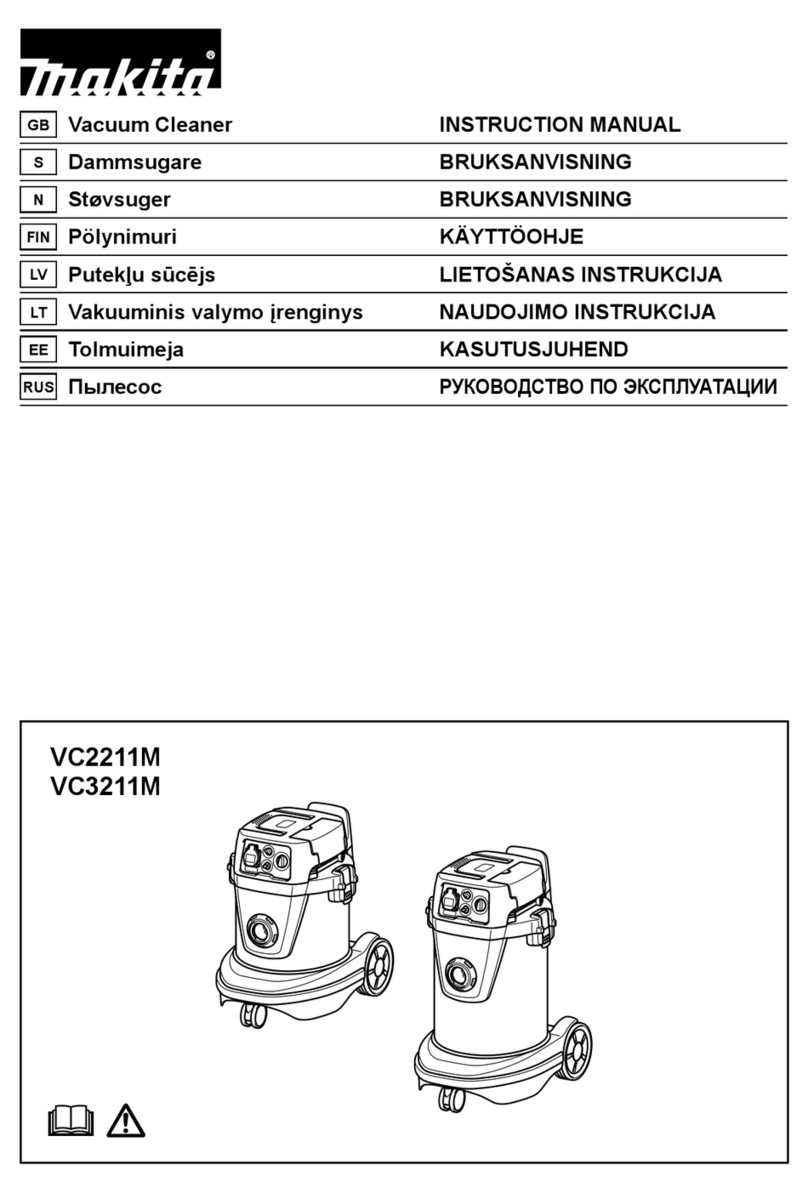3
8. Do not put any object into openings.
Do not use with any opening
blocked; keep free of dust, lint, hair,
and anything that may reduce air
flow.
9. Keep hair, loose clothing, fingers,
and all parts of body away from
openings and moving parts.
10. Turn off all controls before
unplugging or removing the battery
cartridge.
11. Use extra care when cleaning on
stairs.
12. Do not use to pick up flammable or
combustible liquids, such as
gasoline, or use in areas where
they may be present.
13. Use only the charger supplied by
the manufacturer to recharge.
14. Do not pick up anything that is
burning or smoking, such as
cigarettes, matches, or hot ashes.
15. This appliance is provided with
double insulation. Use only
identical replacement parts. See
instructions for Servicing of
Double-Insulated Appliances.
16. Do not use without filters in place.
17. Do not charge the battery outdoors.
18. Use power tools only with
specifically designated battery
packs. Use of any other battery packs
may create a risk of injury and fire.
19. When battery pack is not in use,
keep it away from other metal
objects, like paper clips, coins, keys,
nails, screws or other small metal
objects, that can make a connection
from one terminal to another.
Shorting the battery terminals together
may cause burns or a fire.
20. Under abusive conditions, liquid
may be ejected from the battery;
avoid contact. If contact
accidentally occurs, flush with
water. If liquid contacts eyes,
additionally seek medical help.
Liquid ejected from the battery may
cause irritation or burns.
21. (For the powder filter models.)
Do not use on wet surfaces. Do not
expose to rain. Store indoors.
22. (For the cloth filter models.)
Do not expose to rain. Store
indoors.
23. Always install float before any wet
pick-up operation.
Battery tool use and care
1. Recharge only with the charger
specified by the manufacturer. A
charger that is suitable for one type of
battery pack may create a risk of fire
when used with another battery pack.
2. Use power tools only with specifically
designated battery packs. Use of any
other battery packs may create a risk
of injury and fire.
3. When battery pack is not in use, keep
it away from other metal objects, like
paper clips, coins, keys, nails, screws
or other small metal objects, that can
make a connection from one terminal
to another. Shorting the battery
terminals together may cause burns or
a fire.
4. Under abusive conditions, liquid may
be ejected from the battery; avoid
contact. If contact accidentally occurs,
flush with water. If liquid contacts eyes,
additionally seek medical help. Liquid
ejected from the battery may cause
irritation or burns.
SERVICING OF DOUBLE-
INSULATED APPLIANCES
A double-insulated appliance is marked
with one or more of the following: The
words "DOUBLE INSULATION" or
"DOUBLE INSULATED" or the double
insulation symbol (square within a square).
000006
In a double-insulated appliance, two
systems of insulation are provided instead
of grounding. No grounding means is
provided on a double-insulated appliance,
nor should a means for grounding be
added to the appliance. Servicing a double-
insulated appliance requires extreme care
and knowledge of the system, and should
be done only by qualified service personnel.
Replacement parts for a double-insulated
appliance must be identical to the parts
they replace.

